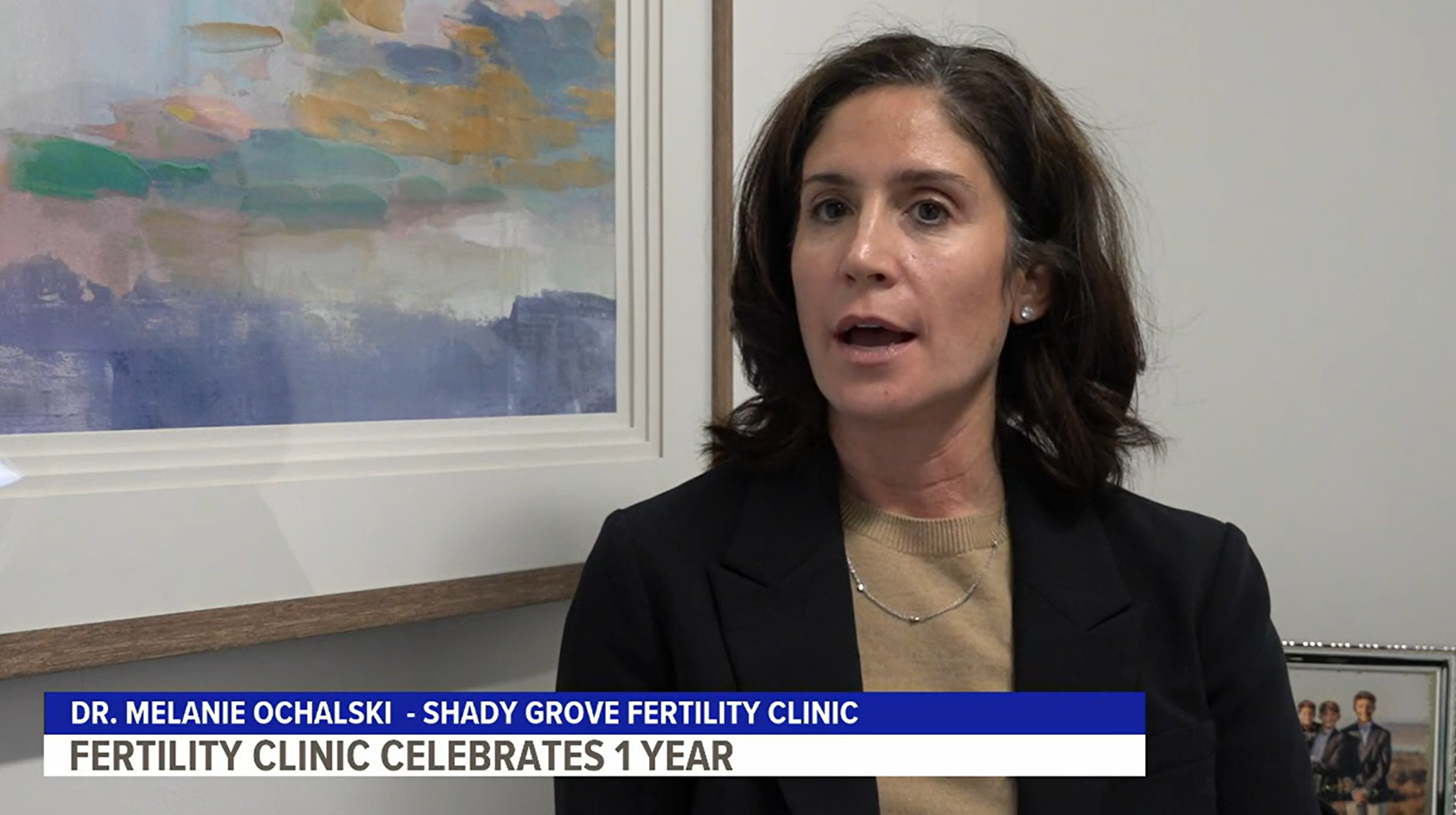Linda Bailey fully admits she’s persistent. Like other self-avowed “Type A” personalities, Linda strongly believed that her fertility riddle could be solved with determination and research. Lots of research.
“I knew within a couple of months that something was wrong,” she says now in hindsight. Linda and her husband, Dave, began trying to conceive when they were in their late 20’s. She stopped taking her birth control pills and when she didn’t immediately get pregnant, she began to read the book,Taking Charge of Your Fertility by Toni Weschler. Interestingly enough, her bit of new knowledge about charting basal body temperature (BBT) and how to track her cycle left Linda more perplexed.
“I took my BBT religiously,” she says. “My temps would go up and down, but hardly ever consistently spiked longer than a few days. What I’d read said this meant your body wasn’t preparing for conception like normal.”
Linda’s curiosity about the optimal actions to get pregnant translated to diligent visits to websites and online communities. She even paid one website to use its charting software but saw no pattern in her cycles. She showed her OB/Gyn the charts as paper evidence of her worries.
“She explained to me that as long as I was getting a period, I was fine. And of course, she said I shouldn’t worry too much because I was only 27.” Linda continued charting her cycles and showing her doctor, who continued to recommend patience. At one point, Dave went with Linda to try and emphasize their concerns to the OB. He told the physician about the emotional toll this was taking on his wife.
“So then, of course, she told us that stress could be our cause for not getting pregnant,” Linda says.
The young woman who’d been studying and charting her fertility so hard just to get pregnant began feeling almost frantic.
“We did everything right: diet, exercise, no alcohol, everything,” she recalls. “I used the ovulation predictor kits and they gave me ‘happy faces’ [indicating ovulation was imminent] during my cycles.”
When Linda asked if there was something “to jump-start us,” her OB/Gyn finally consented to a few bloodtests. When the results came back and were presented to Linda and Dave, the doctor started by saying, “I’m so sorry…” The tests indicated that Linda was not ovulating, in spite of what seemed like a regular menstrual cycle.
“I was frustrated, but relieved that she finally saw what I suspected all along,” she said.
After receiving referrals from her OB/Gyn to two different fertility specialists, Linda and Dave agreed to consult Shady Grove Fertility Center. She describes her first appointment with Dr. Eugene Katz in the Baltimore-GBMC office as “amazing.”
“He wrote out a plan, with the paper facing Dave and me, upside down!” Linda laughs. “He said ‘We’re going to do this, then we’re going to do this…’ and we felt like this was a plan just for us. He told us exactly what to expect.”
But what happened as Linda and her husband left Dr. Katz’ office was even more eye-opening for her. “As we were leaving he took me aside and said to me, ‘You’re 27, you’ll have a child. I promise you.’”
The once-daunted researcher who’d felt let down by her previous physician now felt a sense of hope that she dared believe. The next two months at SGFC were spent in diagnostic testing for both Linda and Dave. Everything came up within normal ranges, even her ovulatory hormonal patterns, which were off just enough to indicate occasional progesterone deficiency. The diagnosis: unexplained infertility.
Dr. Katz had two recommendations to start their treatment. The couple could try to conceive naturally, but with testing to help them time ovulation. Or they could take a short-cut and try intrauterine insemination (IUI).
IUI is a procedure by which a concentrated amount of sperm is placed directly into the uterus through a catheter to help increase the natural fertilization of the egg by the sperm. The procedure is usually done in the SGFC office around the time of ovulation, and is not painful, does not require anesthesia and is usually complete in just a couple of minutes.
“I looked at my husband and said ‘I’m done trying naturally, let’s try IUI’,” Linda remembers. “I told him ‘I can’t keep doing this every month. I want my baby!’” Dave, too, was ready to move into parenthood sooner than later.
Their first round of IUI wasn’t successful. In spite of the extra effort this time – with appointments to monitor her ovulation and having to give herself an ovulation-boosting injection – Linda felt nearly as heartbroken as she had all the prior months. Still, she’s able to look back now with a sense of humor on how it took 45 minutes to get the courage to inject the ovulation medication during that first cycle.
“When we did our second IUI, I just went ahead and did it [injected] myself to spare us all that time!” Linda laughs. “And then due to being called away to work at the last minute, Dave couldn’t be there during the actual insemination. So I like to joke that I got pregnant without him.”
But the best recollection of Linda’s is when she took the home pregnancy test that she’d been advised against taking.
“I was scheduled to go in on December 15th,” she says, the date still fresh in her mind, “but I had all these pregnancy tests from all those months of trying. So I figured, why not. I woke up after dreaming of being pregnant. The result from the first IUI cycle, which was a big fat negative, had taken the full two minutes to show up on the test. This time, it was like 45 seconds…I didn’t know what to do with myself! Dave was still asleep, but I ran into the bedroom, waving this stick and saying ‘Put your glasses on! You have to see this!’”
Over the next two days, Linda took a total of three more home pregnancy tests. “When the last one was gone, I told my husband we needed to get more,” she recalls, “He asked ‘Why?’ and I said that I just needed to keep seeing it!”
“Here,” Dave had responded, handing her the others she’d kept, “just keep looking at these!” He finally convinced Linda to wait for her appointment where, sure enough, a pregnancy was confirmed. After a relatively easy pregnancy, their daughter was born in August.
When asked what message she’d most like to relate to others in her shoes, Linda naturally encourages self-advocacy. She advises others to continue on through the monthly heartache, “because in the end, it’s all worth it. If you think something’s not right, pursue it.” She adds that Dr. Katz gave her and her husband “an amazing gift; I couldn’t have become a mother without him.”





